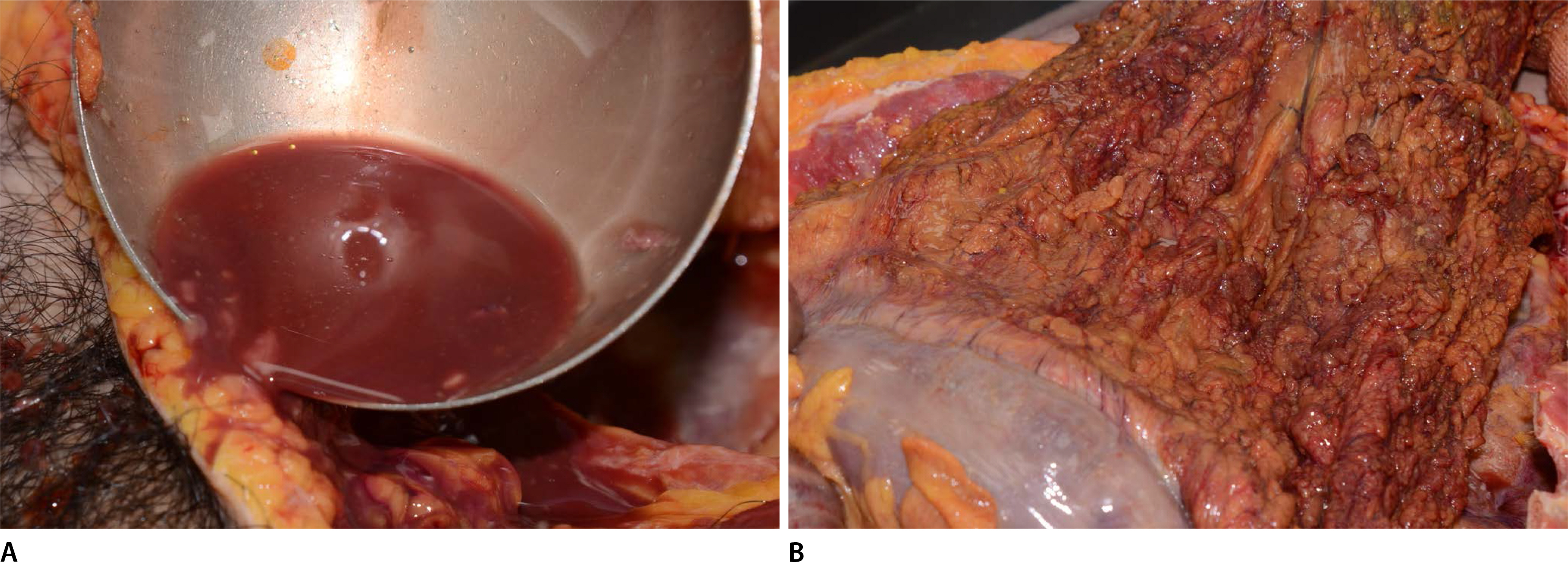Korean J Leg Med.
2016 Nov;40(4):133-137. 10.7580/kjlm.2016.40.4.133.
Death Related to the Dehumidifying Agent
- Affiliations
-
- 1Department of Pathology, Hanyang University College of Medicine, Seoul, Korea.
- 2Medical Examiner's Office, National Forensic Service, Wonju, Korea. kaito-kid@hanmail.net
- 3Department of Forensic Investigation, National Forensic Service Seoul Institute, Seoul, Korea.
- KMID: 2361335
- DOI: http://doi.org/10.7580/kjlm.2016.40.4.133
Abstract
- Dehumidifying agents are commonly used to remove moisture and odors and are not meant for oral ingestion. The hazards of accidental oral ingestion of dehumidifying agents are not well known. A 31-year-old man with autism drank the liquid desiccant contained in the barrel of a dehumidifier while sleepwalking. The desiccant mainly consisted of calcium chloride. He was taken to the emergency center with persistent vomiting and underwent gastric lavage. The patient was treated for hypercalcemia due to calcium chloride poisoning. He eventually died of multiple organ failure. Autopsy findings were as follows: acute suppurative pneumonia, intra-abdominal inflammation, liver necrosis, acute pancreatitis, and gastrointestinal hemorrhage. Calcium chloride has relatively low toxicity; however, when ingested orally, it can cause severe internal damage, and even death. We suggest active preventive measures to ensure the safe use of dehumidifying agents.
Keyword
MeSH Terms
Figure
Reference
-
1.Yoon JJ. Forensic medicine. Seoul: Korea Medical Co.;1993. 175.2.Zhang Y., Wang X., Liu L, et al. Hypercalcaemic crisis in a young man with extensive burns caused by heated CaCl2 solution: a case report. Burns. 2014. 40:e12–4.
Article3.Sim MT., Stevenson FT. A fatal case of iatrogenic hypercalcemia after calcium channel blocker overdose. J Med Toxicol. 2008. 4:25–9.
Article4.Pfeilschifter J. Hypercalcemic crisis. Internist (Berl). 2003. 44:1231–6.5.Singh A., Ashraf A. Hypercalcemic crisis induced by calcium carbonate. Clin Kidney J. 2012. 5:288–91.
Article6.Klein GL. Burns: where has all the calcium (and vitamin D) gone? Adv Nutr. 2011. 2:457–62.
Article7.Brown TC., Healy JM., McDonald MJ, et al. Heart block and acute kidney injury due to hyperparathyroidism-induced hypercalcemic crisis. Yale J Biol Med. 2014. 87:563–7.8.Sonoda K., Watanabe H., Hisamatsu T, et al. High frequency of early repolarization and Brugada-type electrocardiograms in hypercalcemia. Ann Noninvasive Electrocardiol. 2016. 21:30–40.
Article9.Remes-Troche JM. A ‘black stomach’ due to ingestion of anhydrous calcium chloride. BMJ Case Rep. 2013. 2013:bcr2012007716.
Article10.Shimada T., Hirayama Y., Nakanishi K, et al. A case of calcium chloride poisoning complicating necrosis of small intestine. Nihon Kyukyu Igakukai Zasshi. 2009. 20:781–6.
Article
- Full Text Links
- Actions
-
Cited
- CITED
-
- Close
- Share
- Similar articles
-
- Nursing students’ relationships among resilience, life satisfaction, psychological well-being, and attitude to death
- Does our society have the proper understanding of death?
- A Study on the Death Certificates and the Warrant of Seizure in Relation to the Death Certification System
- Review of Acupuncture Related Death Cases with a Case Report: Acupuncture Shock?
- What Happened to Him Using the Freight Elevator: Fall from Height or Caught Between?



